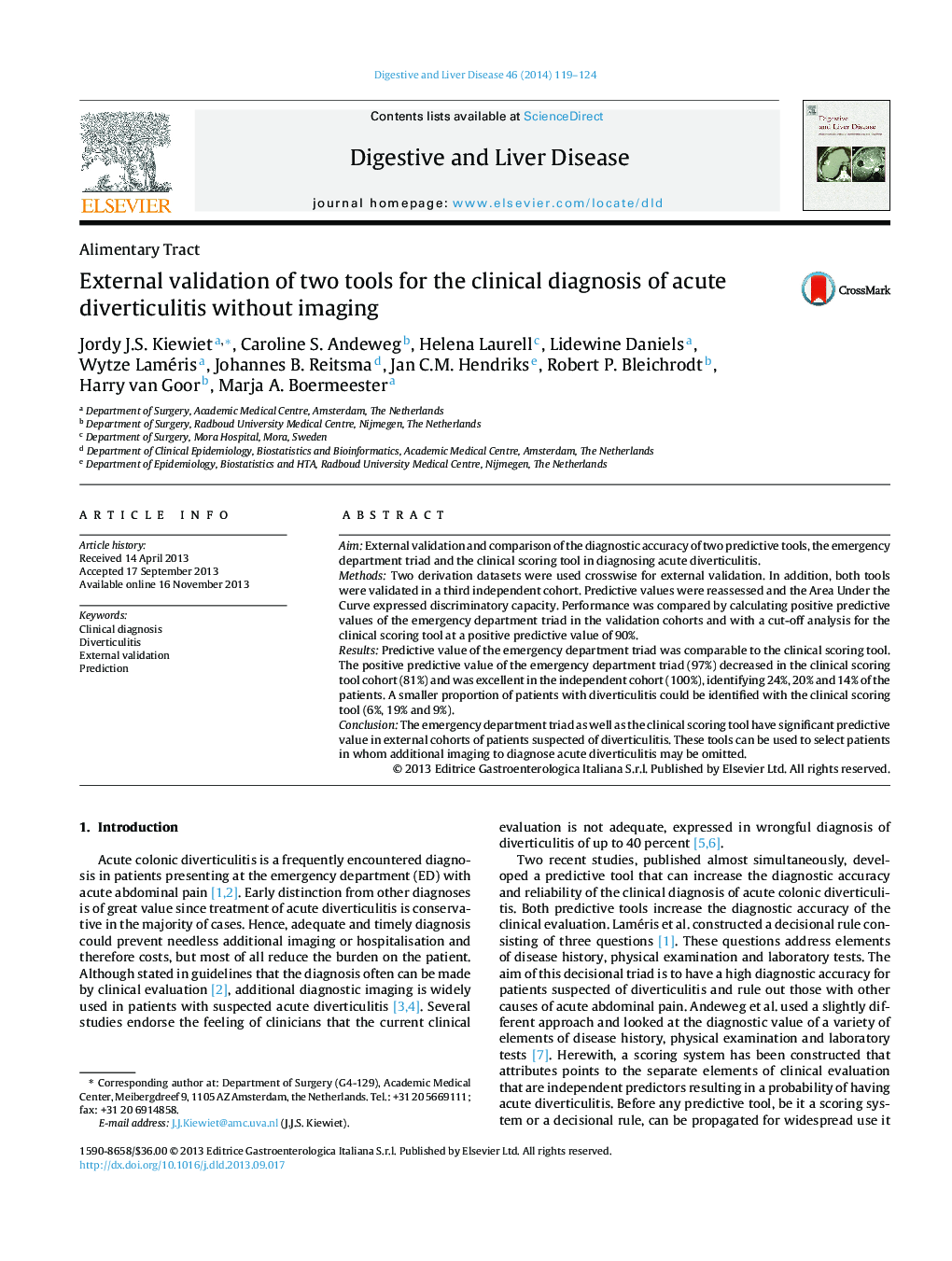| Article ID | Journal | Published Year | Pages | File Type |
|---|---|---|---|---|
| 6088788 | Digestive and Liver Disease | 2014 | 6 Pages |
AimExternal validation and comparison of the diagnostic accuracy of two predictive tools, the emergency department triad and the clinical scoring tool in diagnosing acute diverticulitis.MethodsTwo derivation datasets were used crosswise for external validation. In addition, both tools were validated in a third independent cohort. Predictive values were reassessed and the Area Under the Curve expressed discriminatory capacity. Performance was compared by calculating positive predictive values of the emergency department triad in the validation cohorts and with a cut-off analysis for the clinical scoring tool at a positive predictive value of 90%.ResultsPredictive value of the emergency department triad was comparable to the clinical scoring tool. The positive predictive value of the emergency department triad (97%) decreased in the clinical scoring tool cohort (81%) and was excellent in the independent cohort (100%), identifying 24%, 20% and 14% of the patients. A smaller proportion of patients with diverticulitis could be identified with the clinical scoring tool (6%, 19% and 9%).ConclusionThe emergency department triad as well as the clinical scoring tool have significant predictive value in external cohorts of patients suspected of diverticulitis. These tools can be used to select patients in whom additional imaging to diagnose acute diverticulitis may be omitted.
